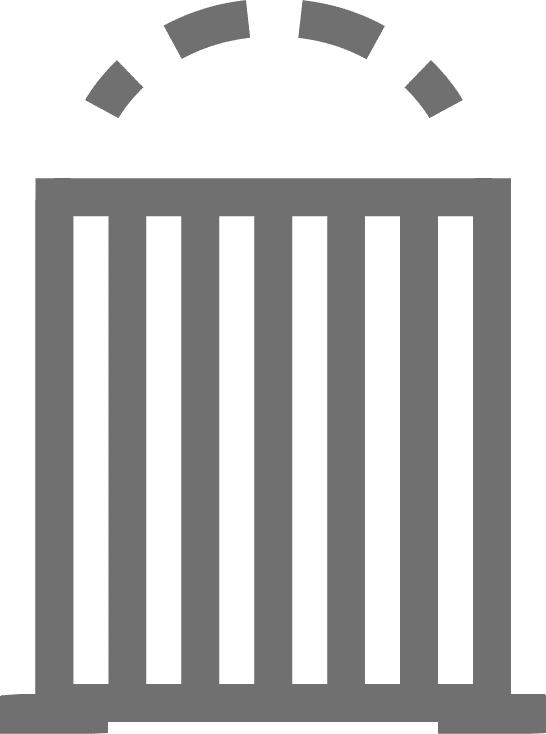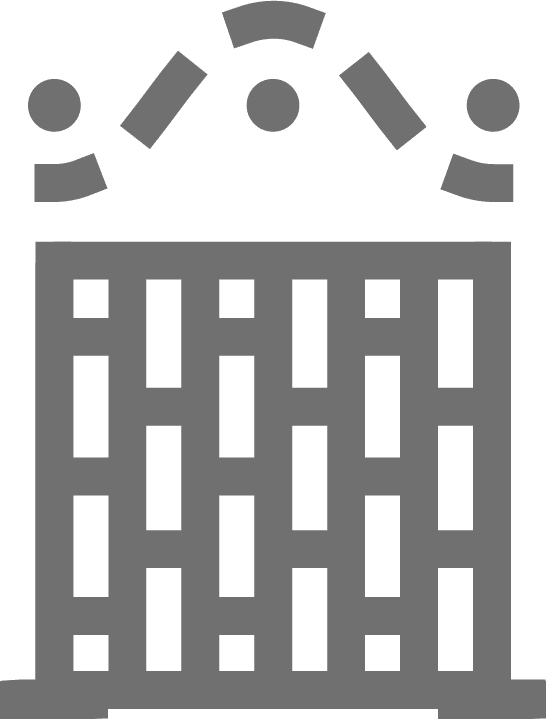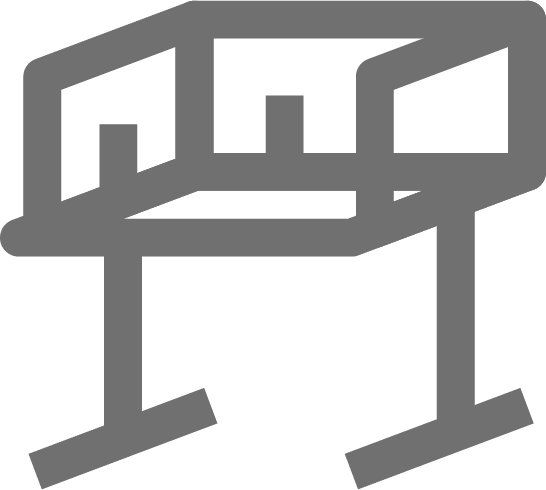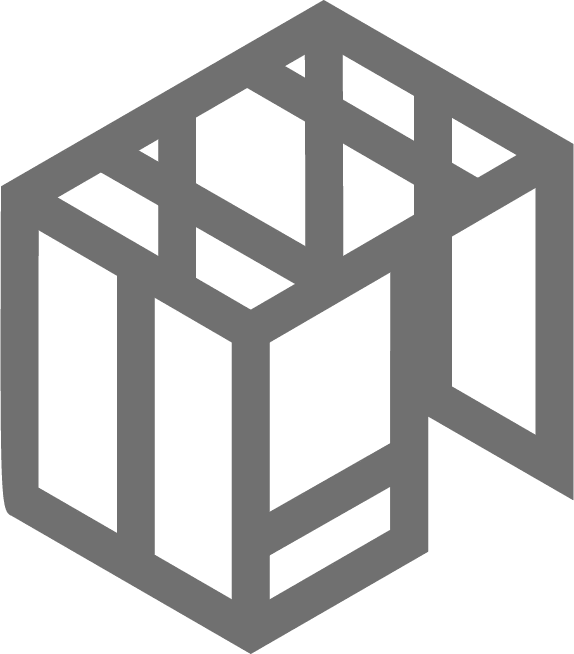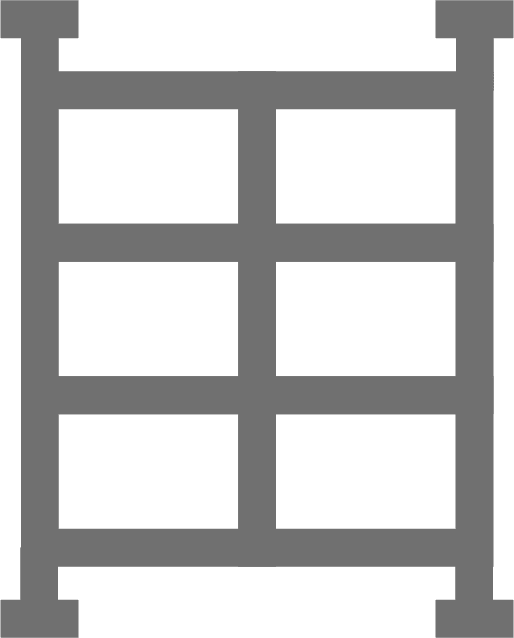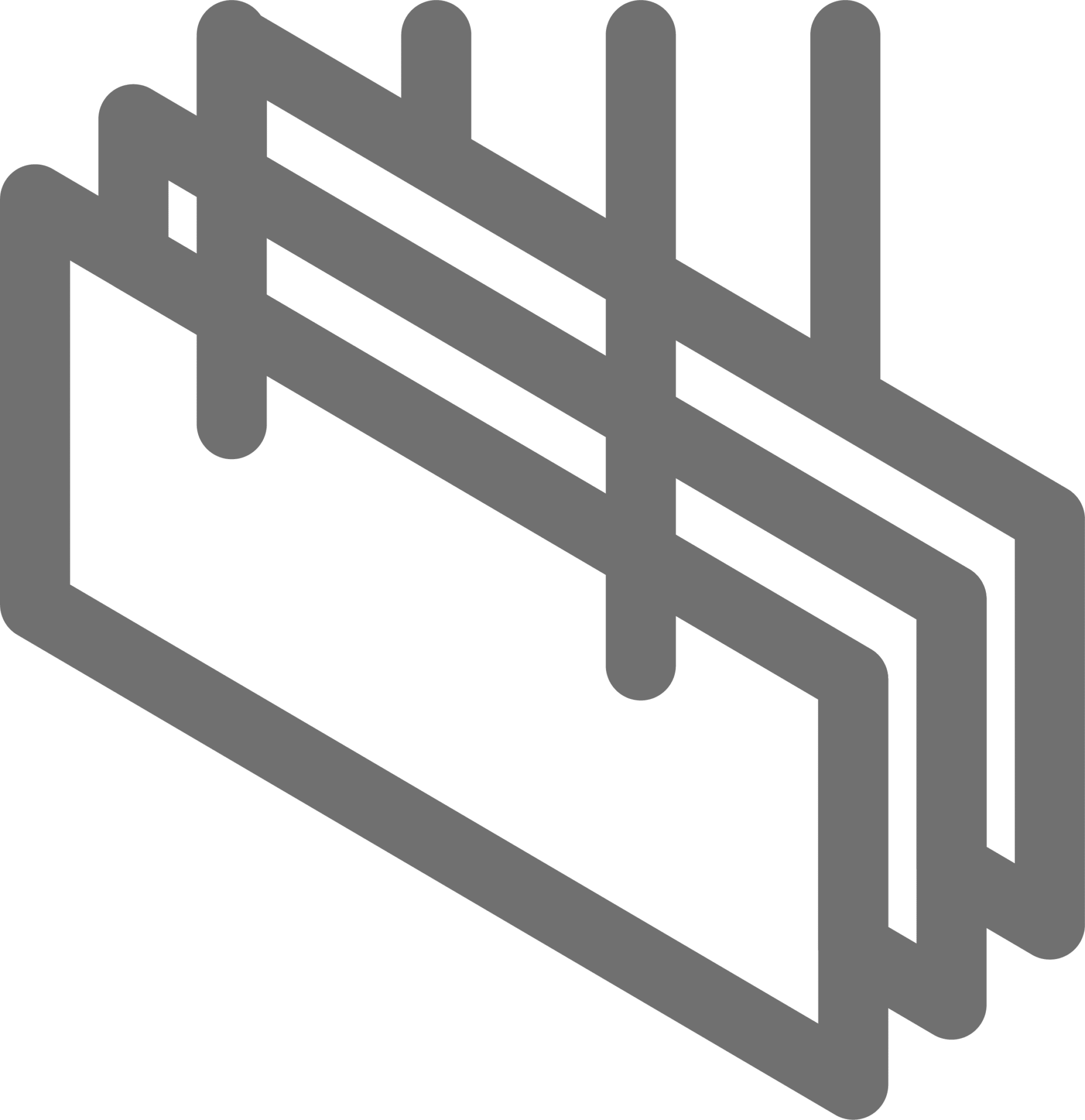42% of workers use makeshift solutions to block out distractions in the workplace. (Gensler U.S. Workplace Survey 2013, 2016)
When most people think of distractions in an office, their minds immediately go to the chatter of co-workers, loud music or social media. What many don’t realize is that visual distractions can steal just as many hours from your day as their noisier counterparts.
Anything from walking co-workers or desk shuffling to videos playing silently on another screen can throw people off task. To combat this problem, we developed a space defining solution called “Divide.”
Divide spaces are designed specifically for individual focused work; simply add a desk divider or combination of linkable office partitions and immediately create an area built for productivity.
Incorporating “Divide” Spaces — Different Strokes for Different Folks
In the same way, no business is the same, no solution is ever the same. The best use of “Divide” spaces is determined by the group using it. Some organizations that rely on consistent collaboration create shared dedicated focus spaces that can be used on an as-needed basis; allowing employees to block time in a “Divide” space and break away for specific tasks that call for absolute privacy. Other companies may have types of work that require hours of focus with limited collaboration. Every organization can create their perfect “Divide” spaces solution and help ensure the success of the organization.
“Divide” spaces can also be fluid. Flexible spaces can be created by installing sliding partitions that can be closed creating a totally private space and then reopened when the task is done.
Visual Distractions vs. Auditory Distractions
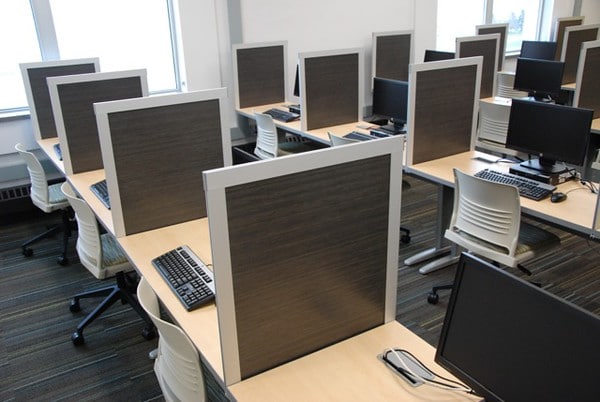
According to a recent study at Cornell University*, visual distractions elicit different responses from the brain than auditory distractions. The brain bounces back to the original task more quickly after long auditory distraction. Even though long visual distractions are less common, they can cause a surprising amount of cognitive disturbance. That is what makes something as simple as a desk divider is so powerful.
Typically, visual distractions can be broken down into two different categories: seeing and being seen. There is the distraction of actually watching (say, someone walking) or by the perception that someone is watching. The open office invites visual transparency, but does so at the cost of exposure. Keeping the pros of the open office model, such as taking away the traditional hierarchy, while balancing privacy is one of the greatest challenges of today’s offices. “Divide” spaces are an answer to that challenge.
Visual Privacy Is About More Than Focus
Within specific industries, healthcare in particular, visual hacking is a serious problem with repercussions that go well beyond the need to focus. Healthcare information and patient privacy are of the utmost importance. Unauthorized use of health information can compromise patients and breach healthcare privacy laws. Simply peering over a nurse’s shoulder is one of the simplest ways to ignore privacy and steal patient information. While privacy filters are one of the more effective ways to protect sensitive information, modular walls can help deter prying eyes. This example can be applied to most industries because privacy means much more than just a need to concentrate.
Controlling the Visual Environment
The average time for a worker to return focus to a task after a distraction is 25 minutes**. These distractions can make the difference between a satisfying day or a frustrating one.
More and more offices recognize the need to help employees control their visual environment. Frequent distractions and interruptions not only disturb work flow, but also negatively affect mood. In industries where privacy is crucial (almost all of them), the demand for visual privacy is even higher. That said, not all work will or can be done in private, collaboration is also an integral part of the work experience.
We believe each type of work deserves its own space and that the focused area to break away for private productivity is called DIVIDE.
* by Justin Mardex at Cornell University
**According to Inc.


